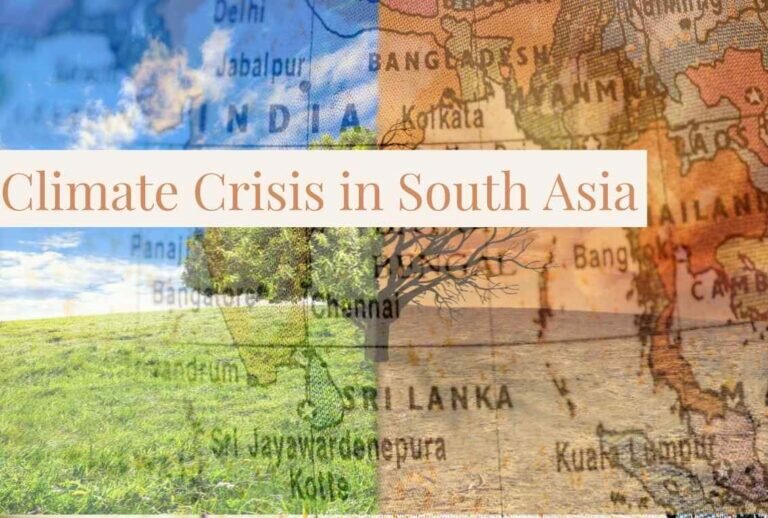A Dilemma of Disaster Management in Pakistan
I. Introduction
Disaster management in Pakistan has been a major concern due to the country’s vulnerability to natural hazards. These hazards include floods, earthquakes, and cyclones. These disasters have caused significant damage to infrastructure, loss of lives, and displacement of people. Pakistan’s location in the Himalayas, the Indus River delta, and the Arabian Sea makes it susceptible to a wide range of natural hazards. The country’s history of natural disasters has been marked by high death tolls, large-scale displacement, and significant economic losses.
In recent years, Pakistan has experienced several major natural disasters, including the 2022 floods. These floods affected an estimated 33 million people and caused an estimated $14.9 billion in damages. Those killed 1,739 people. The 2005 earthquake in the northern regions of Pakistan and Azad Jammu and Kashmir caused over 75,000 deaths and left 3.5 million people homeless. Moreover, the country also experiences regular cyclones, with the most recent being Cyclone Vayu in 2019 which affected over 300,000 people in the province of Balochistan.
The purpose of this essay is to examine the challenges of disaster management in Pakistan and the efforts being made to improve the situation.
Also Read: Problems of Industrial Sector in Pakistan and Way Forward
II. The challenges of disaster management in Pakistan
A. Lack of Resources and Funding
Pakistan’s economy is not strong enough to support the necessary resources and funding for disaster management. This has led to a lack of emergency equipment, training, and personnel. The government’s budget for disaster management is often inadequate, and there is a shortage of funding from international organizations.
For example, in the aftermath of the 2010 floods, the NDMA struggled to provide adequate relief to affected communities. The NDMA did not have enough emergency equipment, such as boats and tents, to respond effectively to the disaster. In addition, many of the relief camps set up for affected communities were overcrowded and lacked basic necessities such as food, water, and medical care.
B. Insufficient Infrastructure and Facilities
Many areas in Pakistan are prone to natural hazards but lack the necessary infrastructure and facilities to protect citizens and respond to disasters. This includes a lack of early warning systems, evacuation routes, and emergency shelters.
For example, in the coastal areas of Pakistan, there is a lack of infrastructure and facilities to protect citizens from cyclones and storms. Many of the communities in these areas are located in low-lying areas. It is making them particularly vulnerable to flooding and storm surges.

C. Limited Capacity of Local Government
Local government officials and communities often lack the capacity and expertise to respond effectively to disasters. This includes a lack of trained personnel and emergency response teams, as well as inadequate communication and coordination systems.
For example, during the 2010 floods in Pakistan, many local government officials were overwhelmed by the scale of the disaster. And, they lacked the capacity and expertise to respond effectively
D. Inadequate Communication and Coordination
Communication and coordination among government agencies, international organizations, and local communities are often inadequate, which can lead to confusion and slow response times during a disaster.
For example, during the 2005 earthquake in the northern regions of Pakistan, there was a lack of coordination among government agencies and international organizations. This led to confusion about who was responsible for providing aid and assistance to affected communities, which resulted in delays in the delivery of aid and resources.
Also Read: The Importance of Water will be more than Oil in the Future Essay
III. The Impact of Disasters on the Population
A. Economic Consequences
Natural disasters can have severe economic consequences, including loss of income, damage to infrastructure, and disruption of trade and commerce. Disasters can cause damage to homes, businesses, and public infrastructure, leading to a loss of income for affected individuals and families. In addition, disasters can disrupt transportation, communication, and power systems, which can negatively impact the economy as a whole.
B. Loss of Lives and Displacement of People
Natural disasters can result in the loss of lives and displacement of people, particularly among vulnerable populations such as children, women, and the elderly. Disasters can also cause severe injuries, which can lead to long-term health problems and disability.
C. Psychological and Emotional Trauma
Disasters can also cause psychological and emotional trauma, especially for those who have lost loved ones or their homes. Trauma can manifest in various forms such as anxiety, depression, and post-traumatic stress disorder (PTSD).
D. Environmental Degradation
Natural disasters can also result in environmental degradation, such as soil erosion, deforestation, and water pollution. Disasters can cause the destruction of wildlife habitats, destruction of natural resources, and damage to ecosystems, which can have long-term effects on the environment.
Also Read: Women’s Status in Pakistan
IV. Efforts being made to Improve Disaster Management in Pakistan
A. National Disaster Management Authority (NDMA)
responsible for disaster management in Pakistan. It was established in 2005 under the National Disaster Management Act, of 2010. The NDMA is responsible for developing and implementing disaster management policies, plans, and guidelines, and for coordinating the activities of government agencies and international organizations involved in disaster management.
The NDMA has several departments. It includes the Disaster Management and Mitigation Department, the Emergency Management and Relief Department, and the Climate Change and Sustainable Development Department. The NDMA also has a National Emergency Operations Center (NEOC) that is responsible for monitoring and responding to disasters.
B. International Aid and Assistance
Pakistan receives aid and assistance from international organizations, such as the United Nations and the World Bank, to help improve disaster management. International organizations provide funding, resources, and expertise to help Pakistan improve its disaster management capabilities.
C. Community-based Disaster Management
Community-based disaster management is becoming increasingly popular in Pakistan. It is because it involves local communities in disaster management efforts and improves their capacity to respond to disasters. Community-based disaster management includes training and education programs, drills, and early warning systems to help communities prepare for and respond to disasters.
D. Use of Technology and Innovation
Pakistan is also using technology and innovation to improve disaster management, including the use of satellite imagery, early warning systems, and mobile apps for disaster response. These tools can help improve the speed and accuracy of disaster response, as well as the overall effectiveness of disaster management efforts.
Also Read: US-China Rivalry: Asia Pacific next Battleground?
V. Conclusion
In conclusion, disaster management in Pakistan is a complex issue that requires a comprehensive approach. Despite the efforts of the government, local communities, and international organizations, challenges such as lack of resources, insufficient infrastructure, and limited capacity of local government remain. However, continued improvement and collaboration among all stakeholders can help mitigate the impact of natural disasters and improve the overall disaster management situation in Pakistan.







